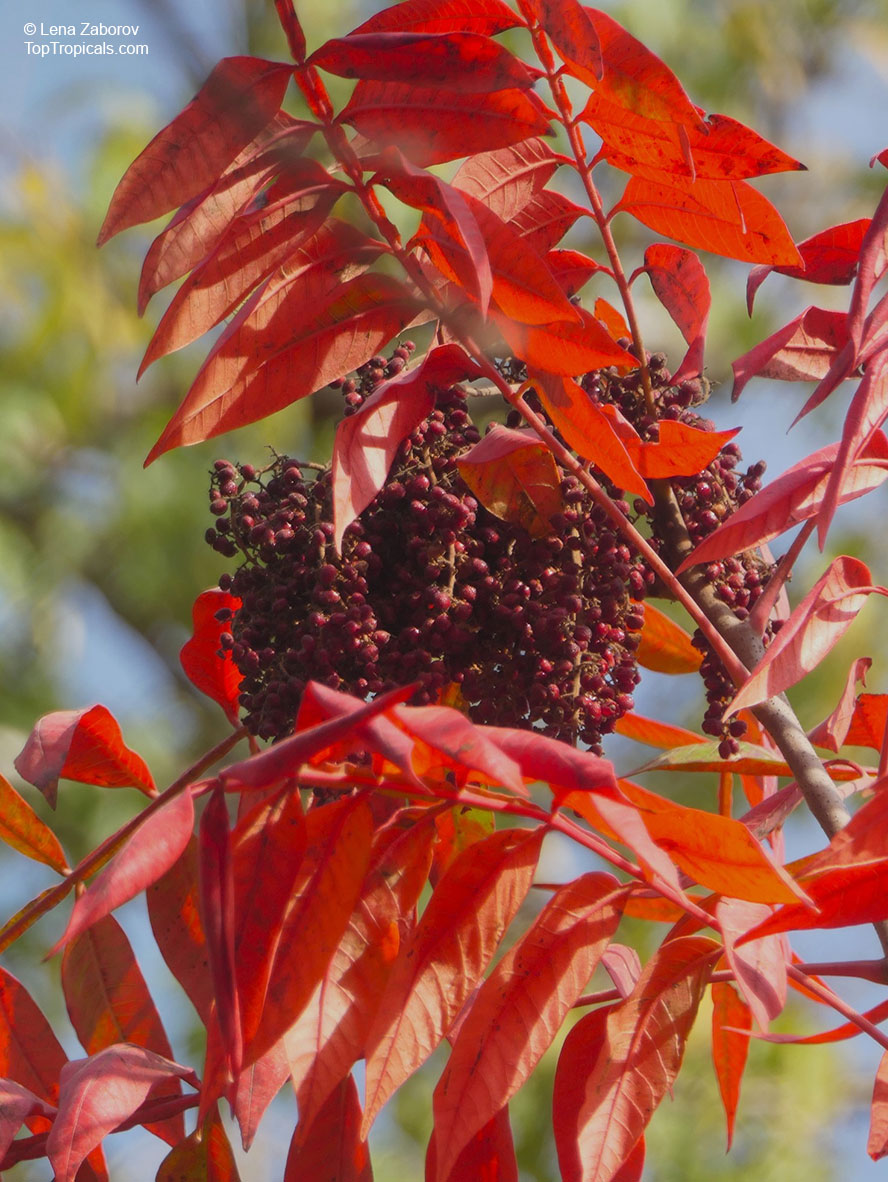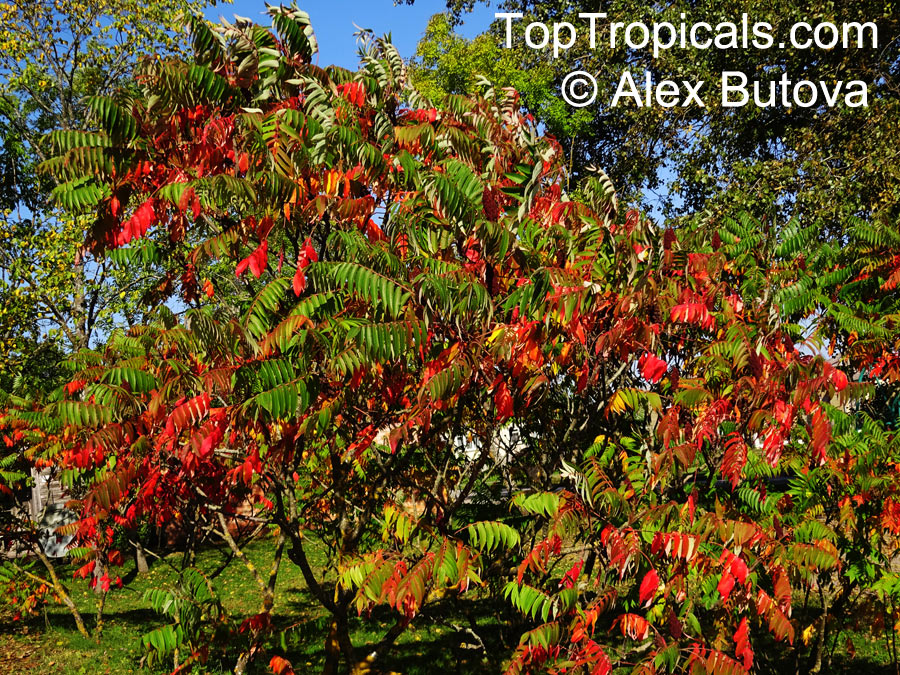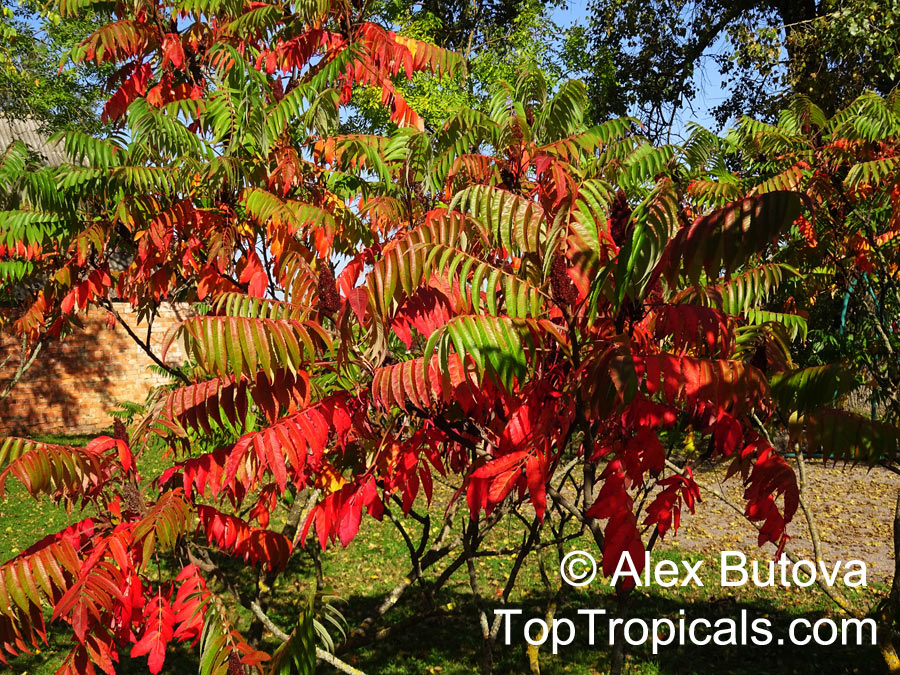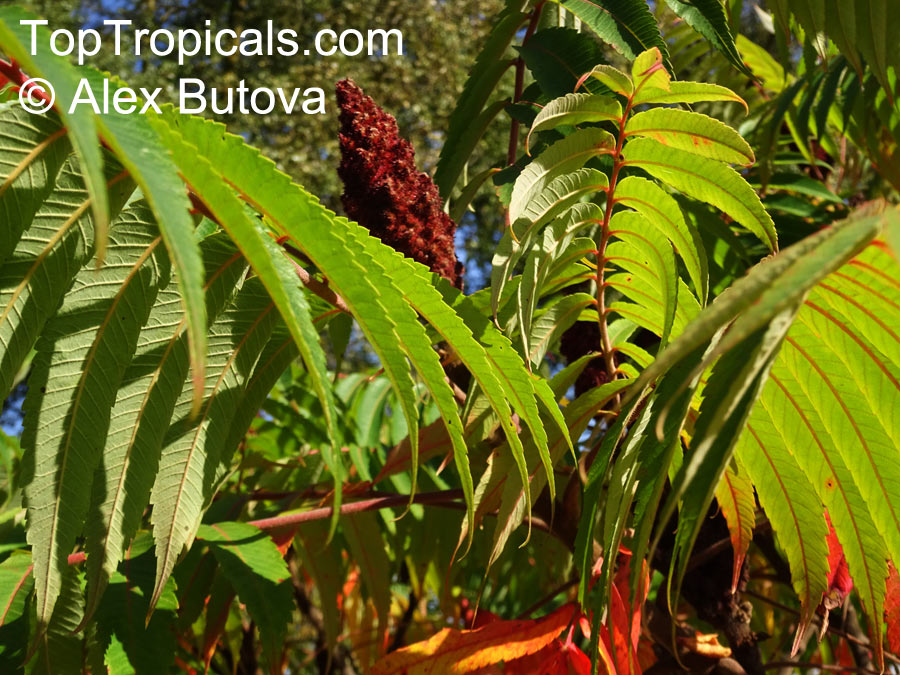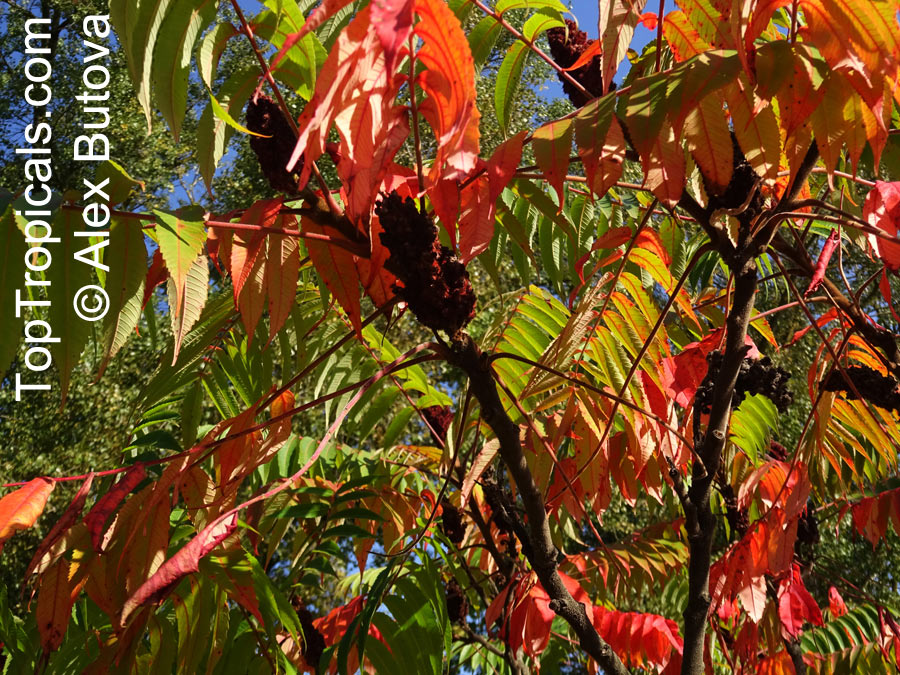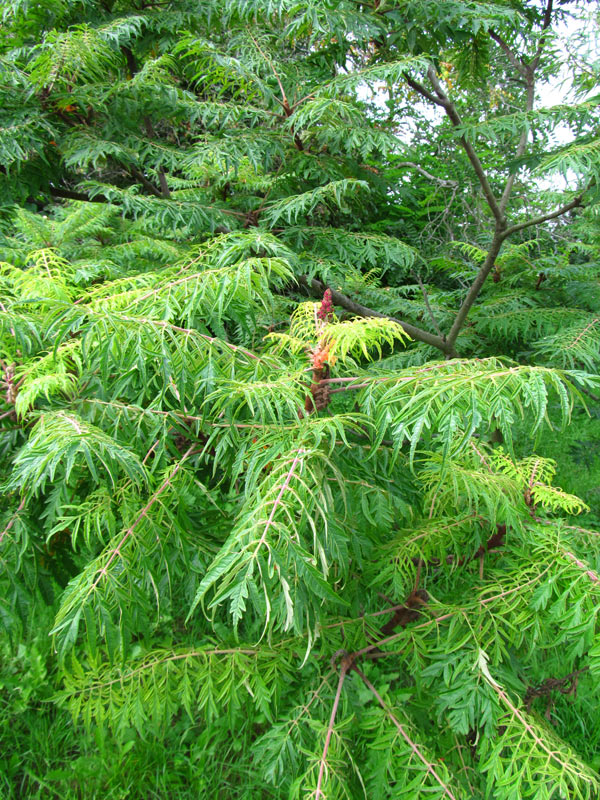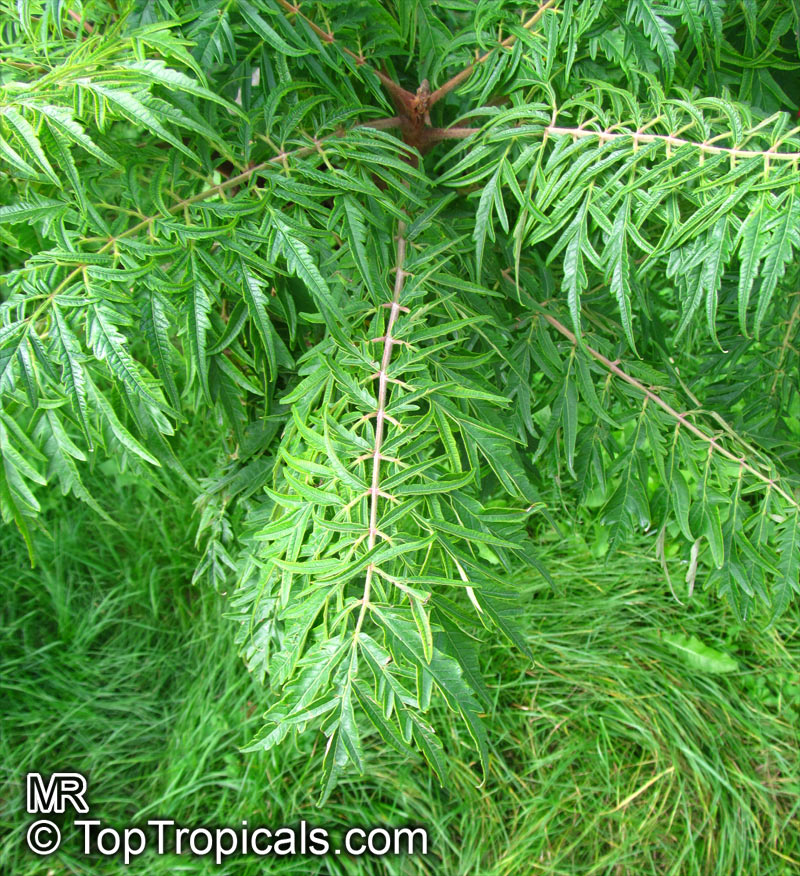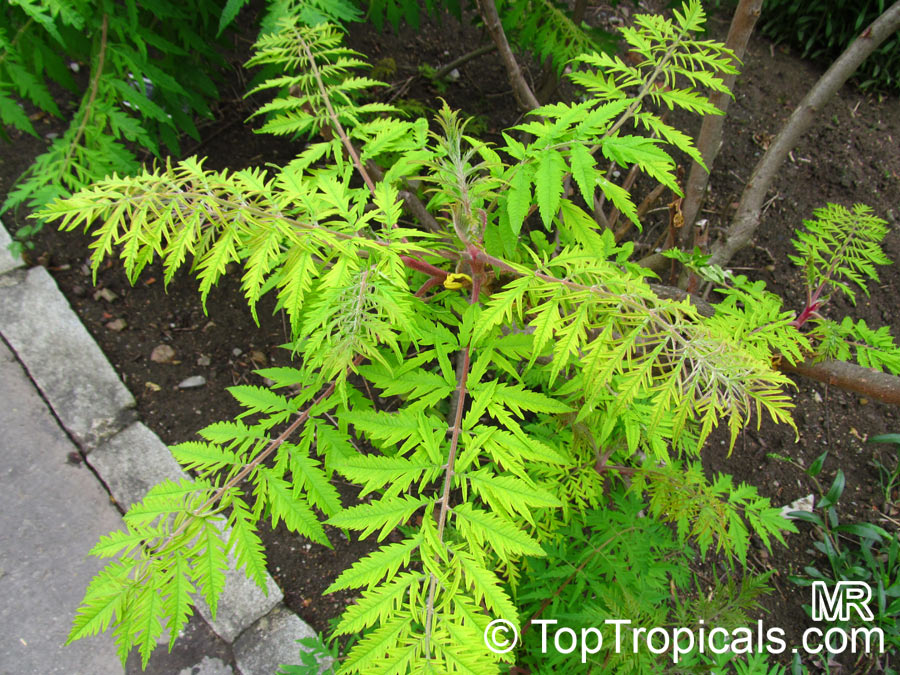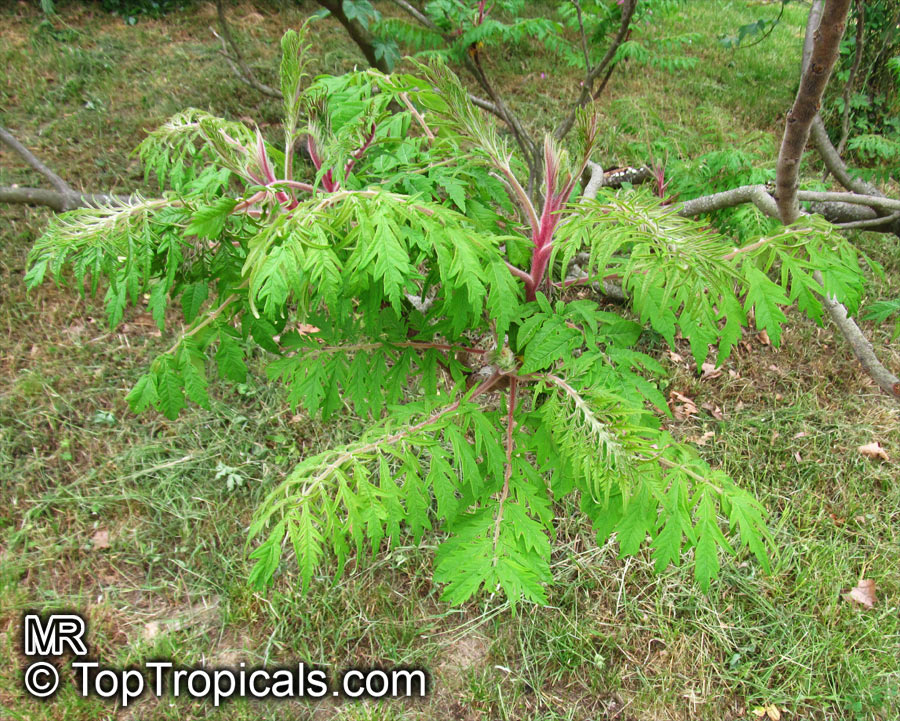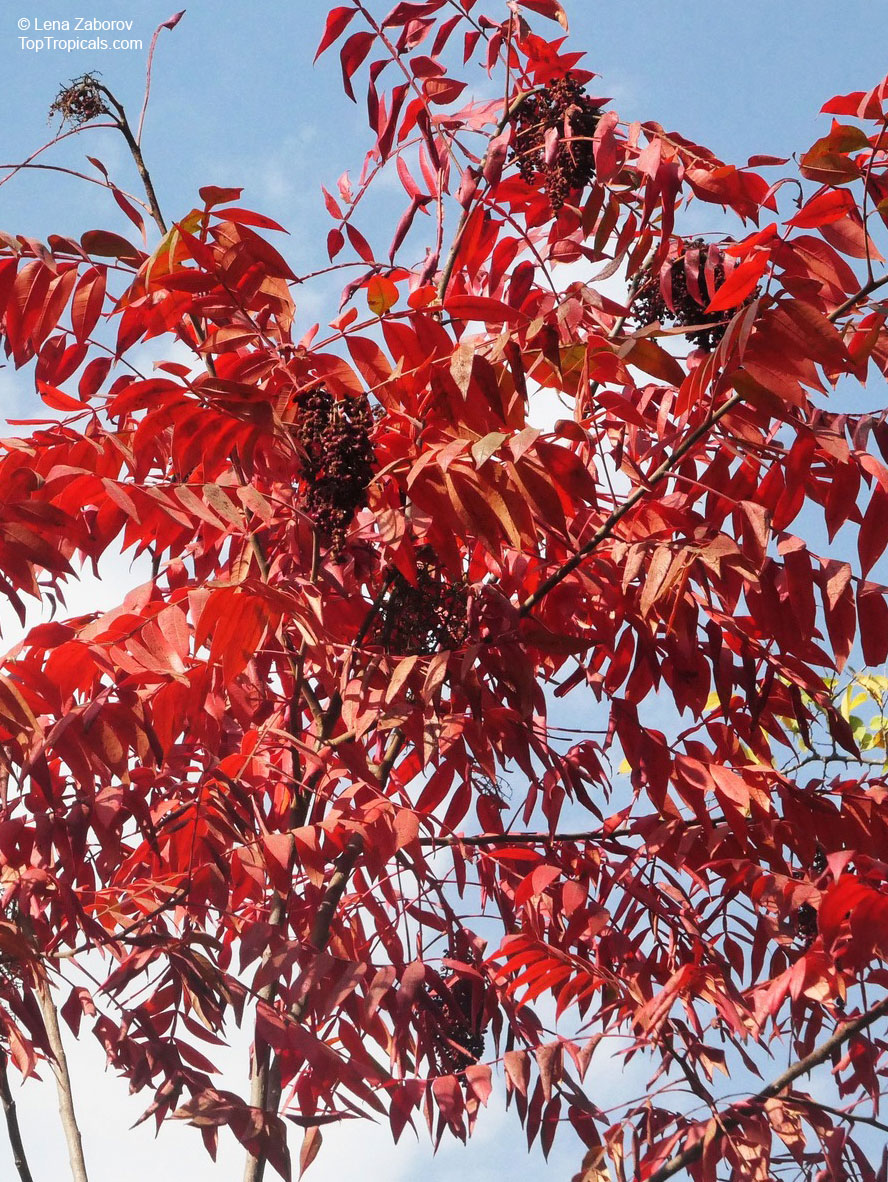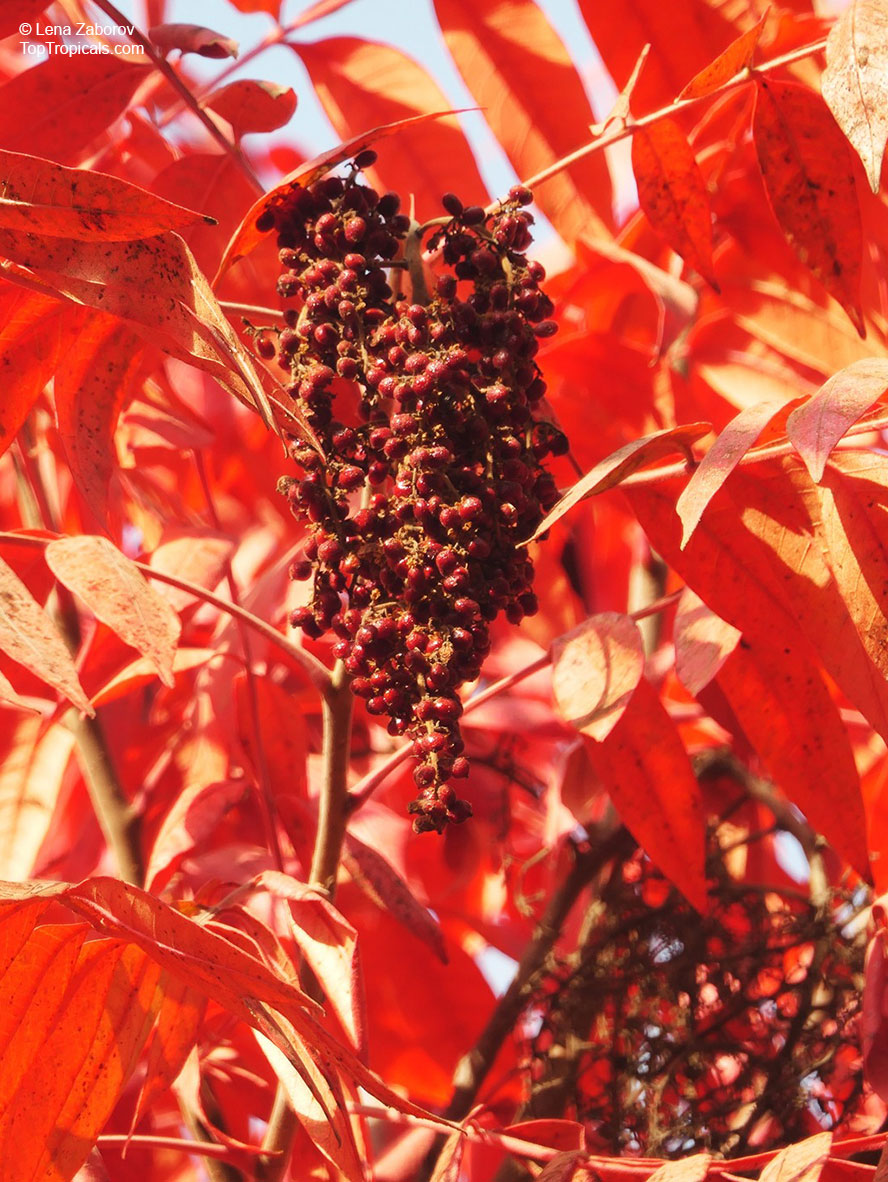Rhus typhina (Staghorn Sumac)
Top Tropicals Plant Encyclopedia
Botanical name: Rhus typhina
Common name: Staghorn Sumac
Family: Anacardiaceae
Origin: North America






It is primarily found in southeastern Canada, the northeastern and midwestern United States, and the Appalachian Mountains, but it is widely cultivated as an ornamental throughout the temperate world. It is an invasive species in some parts of the world.
The plant is named for its branches, which resemble the velvet-covered antlers of a young stag. Staghorn Sumac features large, compound leaves that are oblong and pinnately lobed. In late spring, it produces dense clusters of small, greenish-yellow flowers. By autumn, the leaves transform into bright yellow, orange, and red hues, and the branches display fuzzy, raspberry-like fruits.
It can grow under a wide array of conditions, but is most often found in dry and poor soil on which other plants cannot survive.
Numerous cultivars have been developed for garden use.
The fruit of sumacs are edible. They can be soaked and washed in cold water, strained, sweetened and made into a pink "lemonade"
